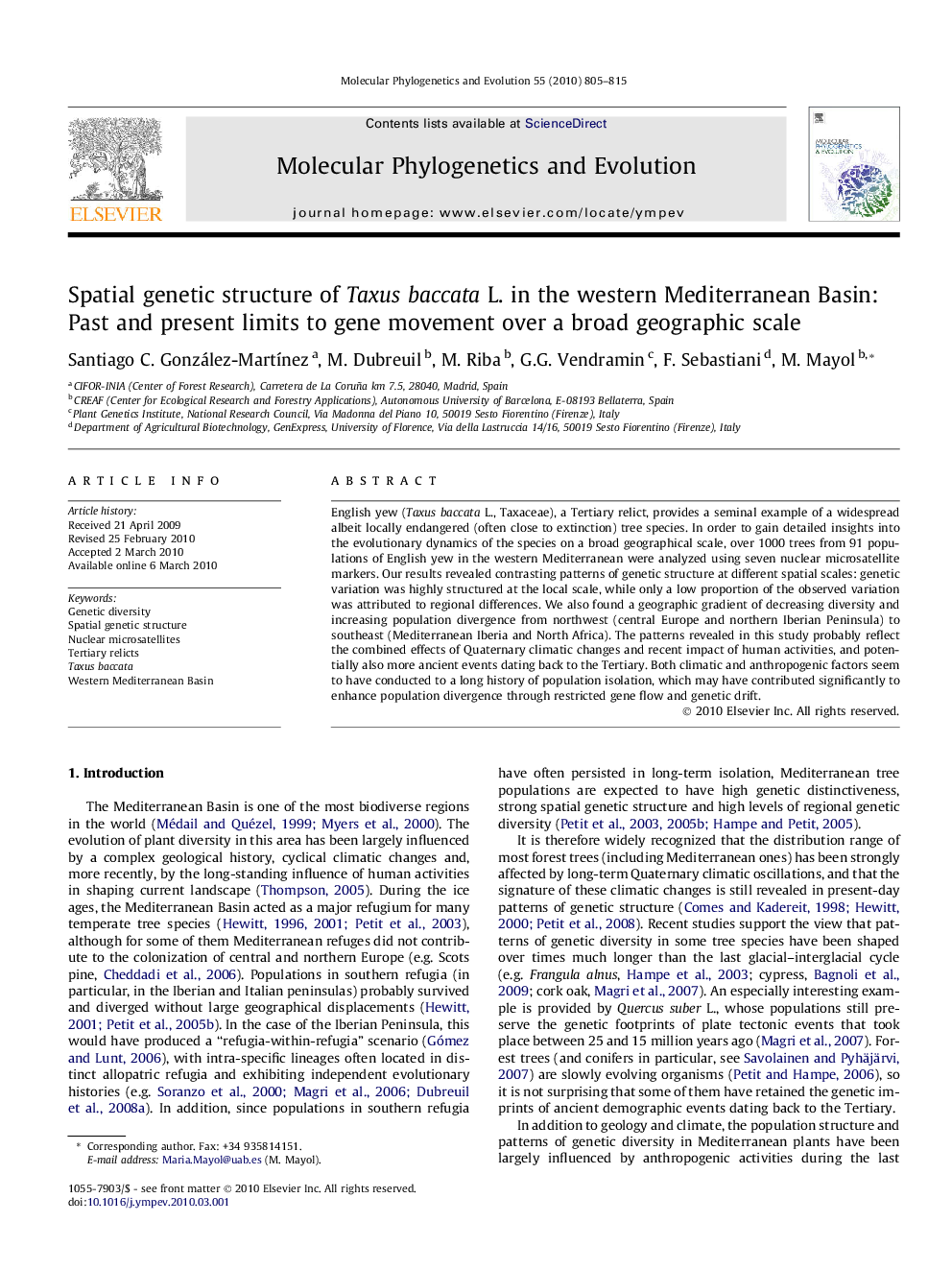| Article ID | Journal | Published Year | Pages | File Type |
|---|---|---|---|---|
| 2834660 | Molecular Phylogenetics and Evolution | 2010 | 11 Pages |
English yew (Taxus baccata L., Taxaceae), a Tertiary relict, provides a seminal example of a widespread albeit locally endangered (often close to extinction) tree species. In order to gain detailed insights into the evolutionary dynamics of the species on a broad geographical scale, over 1000 trees from 91 populations of English yew in the western Mediterranean were analyzed using seven nuclear microsatellite markers. Our results revealed contrasting patterns of genetic structure at different spatial scales: genetic variation was highly structured at the local scale, while only a low proportion of the observed variation was attributed to regional differences. We also found a geographic gradient of decreasing diversity and increasing population divergence from northwest (central Europe and northern Iberian Peninsula) to southeast (Mediterranean Iberia and North Africa). The patterns revealed in this study probably reflect the combined effects of Quaternary climatic changes and recent impact of human activities, and potentially also more ancient events dating back to the Tertiary. Both climatic and anthropogenic factors seem to have conducted to a long history of population isolation, which may have contributed significantly to enhance population divergence through restricted gene flow and genetic drift.
